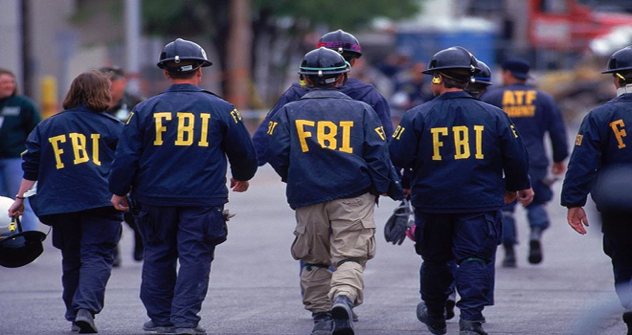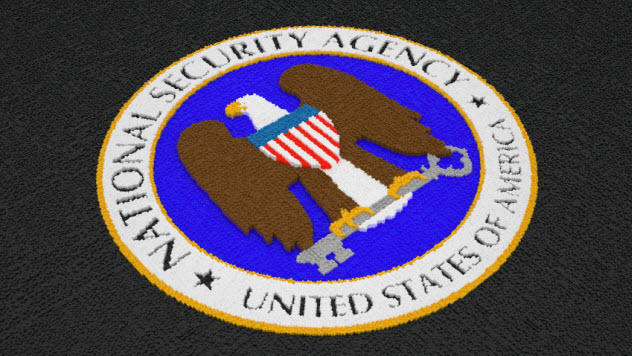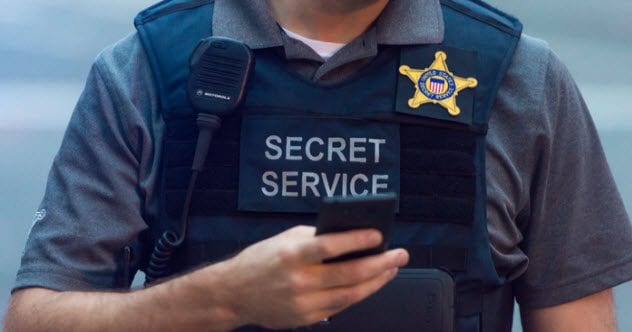 Weird Stuff
Weird Stuff  Weird Stuff
Weird Stuff  Our World
Our World 10 Ways Your Christmas Tree Is More Lit Than You Think
 Movies and TV
Movies and TV The 10 Coolest Stars to Set Sail on The Love Boat
 History
History 10 Things You Didn’t Know About the American National Anthem
 Technology
Technology Top 10 Everyday Tech Buzzwords That Hide a Darker Past
 Humans
Humans 10 Everyday Human Behaviors That Are Actually Survival Instincts
 Animals
Animals 10 Animals That Humiliated and Harmed Historical Leaders
 History
History 10 Most Influential Protests in Modern History
 Creepy
Creepy 10 More Representations of Death from Myth, Legend, and Folktale
 Technology
Technology 10 Scientific Breakthroughs of 2025 That’ll Change Everything
 Weird Stuff
Weird Stuff Ten Bizarre Facts About The Doge Meme
 Our World
Our World 10 Ways Your Christmas Tree Is More Lit Than You Think
 Movies and TV
Movies and TV The 10 Coolest Stars to Set Sail on The Love Boat
Who's Behind Listverse?

Jamie Frater
Head Editor
Jamie founded Listverse due to an insatiable desire to share fascinating, obscure, and bizarre facts. He has been a guest speaker on numerous national radio and television stations and is a five time published author.
More About Us History
History 10 Things You Didn’t Know About the American National Anthem
 Technology
Technology Top 10 Everyday Tech Buzzwords That Hide a Darker Past
 Humans
Humans 10 Everyday Human Behaviors That Are Actually Survival Instincts
 Animals
Animals 10 Animals That Humiliated and Harmed Historical Leaders
 History
History 10 Most Influential Protests in Modern History
 Creepy
Creepy 10 More Representations of Death from Myth, Legend, and Folktale
 Technology
Technology 10 Scientific Breakthroughs of 2025 That’ll Change Everything
Top 10 US Government Watchlists You Don’t Want To Be On
Many of the most powerful agencies and administrative bodies of the United States government keep watchlists. Although these lists are not without problems, criticisms, and legal challenges, they do aid federal intelligence and federal, state, and local law enforcement organizations in the apprehension of ruthless suspects, many of whom are fugitives. For example, James Earl Ray, Ted Bundy, and Osama bin Laden have appeared on the FBI’s “Ten Most Wanted Fugitives” list.
Although the names on these U. S. government lists are not always familiar to many who are outside law enforcement, the less-known criminals named on these watchlists are just as dangerous as the more notorious ones, and they all become targets of agencies across the United States and, often, around the world. They can run, but they can’t hide. Sooner or later, they are likely to be caught. You definitely DON’T want to be on any of these lists!
Top 10 Ways Communist China Might Be Spying On You
10 U. S. Department of State’s “Foreign Terrorist Organizations” Watchlist
The Bureau of Counterterrorism in the U. S. Department of State (CT) identifies the organizations whose names appear on the Department’s “Foreign Terrorist Organizations” watchlist. The purpose of this watchlist is to facilitate the “fight against terrorism [by] curtailing support for terrorist activities and pressuring groups to get out of the terrorism business.”
Currently, the watchlist designates seventy-two FTOs, including some that are well-known to the general public, such as HAMAS, Hizballah, the Palestine Liberation Front, chapters of al-Qaida, Boko Haram, and chapters of ISIS. Not all FTOs are located in the Middle East or western Africa; the watchlist also includes the Revolutionary Armed Forces of Columbia, the Real Irish Republican Army, the Communist Party of the Philippines/New People’s Army, and the Continuity Irish Republican Army.
Fourteen other FTOs have been “delisted,” although their names continue to be included on the watchlist, under this category. In some cases, these organizations have either disbanded, are defunct, or are not presently active.
In selecting organizations to list on the DOS’s watchlist, the CT considers three criteria: actual attacks executed, “planning and preparations for possible future acts of terrorism”; and the retention of “the capability and intent to carry out such acts.”
In addition, to be listed as an FTO, an organization must meet two other criteria: “it must be a foreign organization . . . engage[d] in terrorist activity . . . . [and its] terrorist activity or terrorism must threaten the security of U. S. nationals or the national security.”
If, upon review of a candidate’s listing, the U. S. Congress does not block the candidate’s inclusion on the watchlist, the organization is designated as an FTO, with the rights to appeal this designation and to request the listing’s revocation after two years of its initial or latest listing. In addition, the Secretary of State must review each inclusion within five years of its listing, even if no appeal or request for revocation has been made by the FTO itself.
It goes without saying that this is a list you definitely DON’T want to be on!
9 U. S. Federal Bureau of Investigation’s “Ten Most Wanted Fugitives” List

Neither an interest in justice nor public safety inspired the Federal Bureau of Investigation (FBI) to launch its “Ten Most Wanted Fugitives” list. Instead, the list was a publicity stunt intended to focus citizens’ attention on the Bureau’s capture of the worst of the worst among fugitives, as a means of enhancing the FBI’s reputation. Nevertheless, the list has aided the FBI in its capture of fugitives and has united both citizens and FBI agents in a shared effort to apprehend wanted criminals.
Currently, among the worst of those who are included on the list is Rafael Caro-Quintero, who is wanted for “violent crimes in aid of racketeering, conspiracy to commit violent crimes in aid of racketeering, conspiracy to kidnap a federal agent, kidnapping of a federal agent, felony murder of a federal agent, aiding and abetting, and accessory after the fact.”
Obviously, this is also a list you definitely DON’T want to be on!
8 FBI’s “Ten Most Wanted Terrorists” List

The FBI also maintains a second “Most Wanted” list: its “Ten Most Wanted Terrorists.” This list’s first paragraph announces its purpose in succinct terms: “The alleged terrorists on this list are charged with federal crimes in the United States, as indicated on their wanted posters. The pending charges listed on the posters allow them to be arrested and brought to justice. Future charges may result as various investigations proceed in connection to other terrorist incidents, for example, the terrorist attacks on September 11, 2001.”
As is true of U. S. government agency and administration watchlists, most of the names and photographs are of men, but the current “Most Wanted Terrorists” list also includes the name and picture of a woman, Joanne Deborah Chesimard, who is wanted for an “act of terrorism, domestic terrorism, unlawful flight to avoid confinement, [and] murder.” A series of photographs show her changes in appearance, and an “age progressed” portrait depicts her as she may look at her present age, sixty-nine. She has gone by a host of aliases, and a reward of $1 million is offered “for information directly leading to [her] apprehension.”
As is true with regard to the other suspects and fugitives on this list, the poster summarizes her crimes: “Joanne Chesimard is wanted for escaping from prison in Clinton, New Jersey, while serving a life sentence for murder” after participating in the wounding of one trooper and the “execution-style” murder of another New Jersey state trooper who had stopped her and her companions “for a motor vehicle violation on May 2, 1973. . . . In 1977, Chesimard was found guilty of first[-]degree murder, assault and battery of a police officer, assault with a dangerous weapon, assault with intent to kill, illegal possession of a weapon, and armed robbery. She was sentenced to life in prison. On November 2, 1979, Chesimard escaped from prison and lived underground before being located in Cuba in 1984. She is thought to currently still be living in Cuba.”
The others on the list are just as dangerous, having been charged with a multitude of crimes involving acts of terrorism or other serious felonies. This, again, is a list you DON’T want to be on!
7 U. S. Transportation Security Administration’s “No-Fly List”

The “No Fly List” of the U. S. Transportation Security Administration (TSA) is “a subset of the U. S. government Terrorist Screening database.” It designates individuals “prohibited from boarding an aircraft,” including some who may be permitted to board after undergoing “additional security screening checks” than those undergone by passengers whose names are not on the list.
The U. S. government cannot prevent people named on the “No Fly List” from flying home from another country and is obligated to assist such persons in doing so if they are prevented from boarding an airplane for that purpose. However, the process is complex and time-consuming, and “FBI agents or other U. S. officials may seek to question or interrogate you while you are abroad, after your denial of boarding, and while you are seeking authorization to fly back to the United States.” This situation can occur even when names are added to the “No Fly List” by mistake.
Eight situations can cause someone’s name to be listed: suspicion that one is involved in “direct terrorist activity”; “travel to certain countries”; one’s past comments; having a name “similar” to that of another person whose name is already on the list; refusing to become an FBI informer; a “clerical error”; “open warrants” or other “law enforcement issues”; and even “controversial tweets.”
These possibilities, like the difficulty of getting one’s name removed from the list if it is added in error and the damage to one’s reputation that having one’s name included on the list may cause, are reasons you definitely DON’T want to be on this list!
6 U. S. National Security Agency’s Watchlist

The names of people who downloaded Tor privacy software in 2011 may have been added to the U. S. National Security Agency (NSA) watchlist. It is known that the federal government “monitored email of five Muslim-Americans, including a former Bush Administration official,” despite these citizens’ vehement denials of having been involved “in terrorism or espionage,” or to have advocated “violent jihad or . . . to have been implicated in any [other] crime, despite years of intense scrutiny by the government and the press.”
All five of the Muslim-Americans whose email was monitored have extraordinary credentials. Faisal Gill was a Republican candidate for the Virginia House of Delegates; Asim Ghafoor, “a prominent attorney” whose clients were charged in “terrorism-related cases”; Hooshang Amirahmadi, a professor at Rutgers University; Agha Saeed, a professor at California State University; and Nihad Awad, a Muslim civil rights organization leader.
The NSA countered charges of digital spying by insisting that it “collects information for valid foreign intelligence purposes [only] and . . . ‘minimizes’ information it collects about U. S. residents.” However, the Agency’s “minimizing procedures vary by program,” the Privacy and Civil Liberties Oversight Board observed. “Under [its] Prism [program], for example, the NSA shares much more than ‘minimized’ data with the FBI and CIA.”
It is scarcely reassuring that the NSA’s own records indicate that, although many of the “7,485 email addresses [the NSA monitored] between 2002 and 2008” were associated with FTO operatives, the Agency also has “wide latitude in spying on U. S. citizens,” including some who are public figures.
It is also not particularly reassuring that no one knows for certain whether “the government obtained any legal permission to monitor the Americans on the list.” The facts that legal experts are skeptical of the legality of the NSA’s “secretive” uses of its watchlist and that the FISA process may violate American citizens’ civil liberties are reasons you do NOT want to be on this list!
5 U. S. Secret Service’s “Most Wanted Fugitives” List

Like the FBI, the U. S. Secret Service maintains a list of wanted criminals, its “Most Wanted Fugitives.” The current list offers rewards of $1 million each “for information leading to the arrest of” either Oleksander Vitalyevich or Artem Viacheslavovich Radchenko. The former “recruited” the latter (among others) to hack “into the computer networks of the U. S. Securities and Exchange Commission . . . and [take] data related to the financial earnings of publicly traded companies before they were released”.
It’s not hard to see why you DON’T want to be on this list!
4 U. S. Marshals Service’s “15 Most Wanted” List
The U. S. Marshals Service (USMS) provides a multitude of services to federal, state, and local law enforcement organizations, including fugitive task force support for law enforcement agencies; conducting internal investigations; investigating alleged sex offenders; “pursuing unregistered and non-compliant sex offenders”; removing “violent gang members, weapons, and drugs, from . . . communities”; and providing “technologically advanced electronic surveillance and investigative intelligence” to the USMS and other federal agencies throughout Mexico and the United States.
The USMS also maintains a list, similar to those of the FBI’s “Ten Most Wanted Fugitives” and the Secret Service’s “Most Wanted Fugitives.” The USMS’s own 2021 “15 Most Wanted” list includes the names of Derrell Brown, for whom a $25,000 reward is offered; Michigan authorities want him “on charges of receiving and concealing a firearm and on two counts of homicide.” Other fugitives are wanted in several states on a variety of charges, including child rape, murder, double murder, unlawful flight to avoid prosecution, and child molestation. All should be “considered armed and dangerous.”
You DON’T want to be on this list, either!
3 U. S. Immigration and Customs Enforcement’s “Most Wanted” List
Like the FBI and the USMS, the U. S. Immigration and Customs Enforcement (ICE) maintains a “Most Wanted” list. The number of wanted persons on the ICE list is more extensive than those of any of the other American federal law enforcement agencies.
The current ICE “Most Wanted” list contains thirty-four names. A “CAPTURED” banner appears across the upper left corners of eight of the photographs, and a green “DELETED” banner appears across the upper left corner of one picture, leaving twenty-five of the “Most Wanted” still at large.
Each photograph is captioned with the wanted person’s alleged crimes: “controlled substance possession,” “harboring aliens, RICO”; “immigration violations”; “money laundering, sanctions evasion”; “child rape”; “narcotics”; “battery, burglary”; “aggravated homicide”; “sex trafficking”; “illegal reentry”; “gang membership”; “narco-terrorism”; “aggravated DUI”; “human trafficking”; “sex trafficking of a minor”; “manslaughter”; and “labor trafficking.” The list warns citizens, “Do not attempt to apprehend any subject.” Instead, citizens are directed to “contact . . . ICE” or “call the national hotline.”
It’s clear: you DON’T want to be on this list!
2 U. S. Department of Drug Enforcement Administration’s “Most Wanted Fugitives” List

The U. S. Department of Drug Enforcement Administration (DEA) also maintains a watchlist of its “Most Wanted Fugitives.” The individuals on this list, current and past, are dangerous people who have committed or are charged with horrific crimes, including the “kidnapping and murder of a federal agent,” “drug trafficking,” conspiring to distribute heroin, and the “use of minors in drug trafficking.”
The DEA cautions that many of these suspects or fugitives are “armed and dangerous” and lists rewards for some, including Rafael Caro-Quinetro ($20 million), Nemesio Oseguera-Cervantes ($10 million), and Dario Antonio Usaga David (“up to $5 million”).
The huge resources of the DEA, both in regard to personnel and to funding; the millions of dollars in rewards offered as incentives for information regarding some of these suspects and fugitives; and the punishments awaiting those who are captured and convicted make this a list you DON’T want to be on!
1 U. S. Department of Homeland Security’s List of Consolidated Watchlists
The U. S. Department of Homeland Security’s (DHS’s) list of consolidated watchlists is, in a sense, a compilation of other U. S. government agencies’ and administrations’ watchlists. Based on “a copy of the Terrorist Screening Database (TSDB), the U. S. Government’s consolidated database maintained by the Department of Justice (DOJ), [and the] Federal Bureau of Investigation (FBI) Terrorist Screening Center (TSC),” the DHS’s list of consolidated watchlists is used “to facilitate DHS mission-related functions, such as counterterrorism, law enforcement, border security, and inspection activities.”
The general public is denied access to this consolidated list; it is available only to government officials who have a “need-to-know” status. However, “all individuals, regardless of citizenship, may obtain access to records consistent with the Freedom of Information Act (FOIA) unless disclosure is prohibited by law.” Due to the limitations regarding DHS information access, though, it is next-to-impossible for ordinary citizens to see just what, exactly, the Department’s watchlist contains.
However, it seems safe to say that this is another U. S. government list you DON’T want to be on!
10 Dark Conspiracy Theories That Actually Turned Out To Be True
About The Author: An English instructor at the University of Nevada Las Vegas, Gary L. Pullman, a regular contributor to Listverse, lives south of Area 51, which, according to his family and friends, explains “a lot.” His five-book series, An Adventure of the Old West, is available on Amazon.








